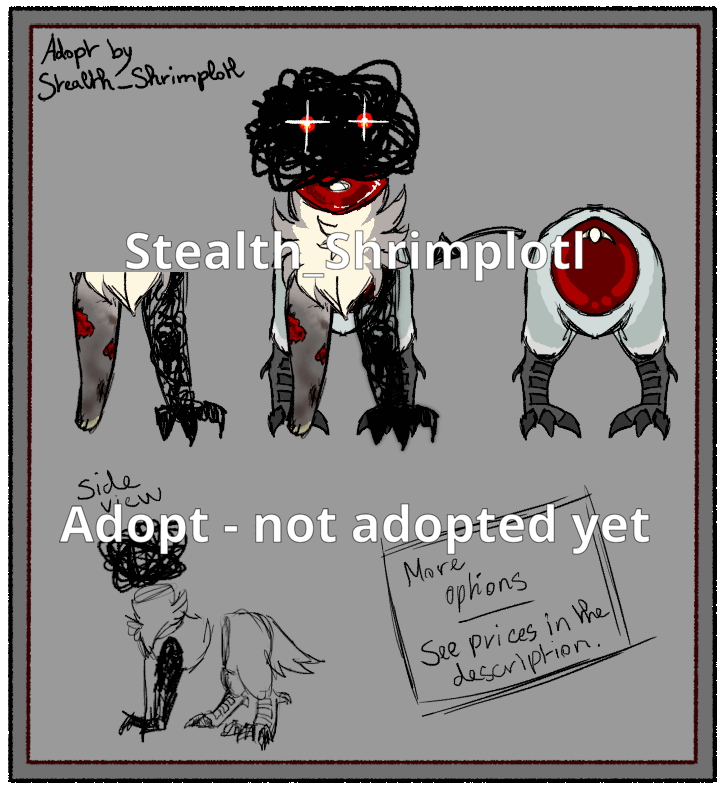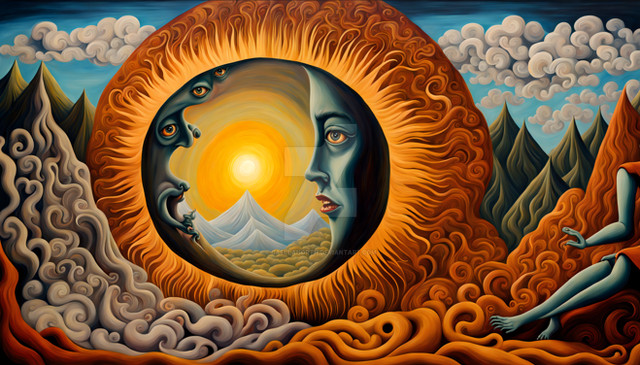HOME | DD
 MUTTD0G — No face reference v2
MUTTD0G — No face reference v2

#face #feather #feathers #mask #masked #myo #noface #origional #ref #reference #sheet #species #no
Published: 2015-08-05 15:57:53 +0000 UTC; Views: 1086; Favourites: 30; Downloads: 1
Redirect to original
Description
Well, I've made some changes to the species, so I needed to update the reference sheet. THERE IS ALSO A PART TWO REGARDING MASKS AND FEATHER SHAPES.READ DESCRIPTION FOR ALL INFO, AND BEFORE REQUESTING A MYO
Thats right, I will be opening MYO NoFaces later today!







fav.me/d94agc3 Part 2
NOFACE REFERENCE SHEET
The Basic Shape
Color Key:
1) Mouth: The mouth of a NoFace is brightly colored, at least two colors from the tail feather palate, one for the tongue, and one for the inside of the mouth.
2) Mask Color: The mask of a NoFace is always black, or a dark shade of grey. It will never be any other color.
3) Feathered areas: Areas where feathers may be placed, and ONLY where they can be placed. There may be a maximum of four feathers on the tail end, and eight on the neck. A minimum of three ob both. NO NATURAL COLORS ON THE FEATHERS. Feathers are bright, tropical-ish colors only, and ALWAYS have black on the tips. (See coloration below for details).
4) and 5) Body color: Natural colors are used for the body ONLY. Some rare exception of yellows and oranges can be found, but not in the wild. NO WHITE may be used for the body, except for in very small accents. They are usually darker colors such as black or grey, but may also be an other natural color. NO UNNATURAL COLORS ON THE BODY.
Other Shapes
NoFaces do not just come in one shape. Several shapes exist in the wild, while others are a result of breeding, and one a freak accident.
1) Common NoFace: The standard NoFace shape, most commonly found in the wild before domestication. It still exists as the most common form today.
2) Ridge Back NoFace: The Ridge Back NoFace is basically the same shape as the Common NoFace, only with an elongated back, giving it a curved figure. This si also very common in the wild.
3) Long Bodied NoFace: A result of breeding that produced a longer body than those found in the wild. It is especially popular as a pet for young children, known for it's extreme docile nature.
4) Spider NoFace: A breed that is often sought over in the domesticated world, because of it's tall elegance. It has very long, slender legs and is quite graceful.
5) Arctic Fluff NoFace: This type of NoFace is found in the wild, where temperatures are very low, although breeding has made it even fluffier, and able to shed in the summer to darker colors. Children and adults alike love to cuddle this smaller than average NoFace!
6) Arctic Bear NoFace: Another result of breeding that produced the same characteristics as a Arctic Fluff NoFace, except larger.
7) Dragon NoFace: The Dragon NoFace was created in a controlled environment through intensive breeding. It is the rarest NoFace, because it's genes rarely pass on in breeding. Anyone who can get their hands on one of these is always admired. Even though they are longer, and heavier than the rest, and have two sets of front legs, they still make wonderful pets.
8) Ferret NoFace: A hyper breed of the Long Bodied NoFace. These are hard to come by, but beautiful and especially popular among collectors and breeders.
Coloration
NoFaces have a color palate with many colors.
BODY The body of a no face, meaning all areas excluding feathers and the mouth, are ALWAYS natural colors. They often come in blacks and greasy, and uncommonly light brows, brows, and creams. Typically, they can come in any color as long as it is natural. Dull Oranges and Yellows are extremely rare, but can happen in domestic NoFaces. NO WHITE, AND NO UNNATURAL COLORS, even as accents.
FEATHERS Feathers are always brightly colored, and often resemble tropical colors. Darker shades can be introduced, but it is not probable. All feathers have black tips at the end, even if you have a domestic NoFace that does not drip ink.
FIN~
MYO NoFaces will be OPEN TODAY! Check back if you would like to Make your own for a small fee! Rules and guidelines will be posted in a journal.
CHECK OUT PART TWO FOR ALL INFORMATION REGARDING MASKS, FEATHERS AND EARS!
--------------------
Species (c) MUTTD0G
All art (c) MUTTD0G



























